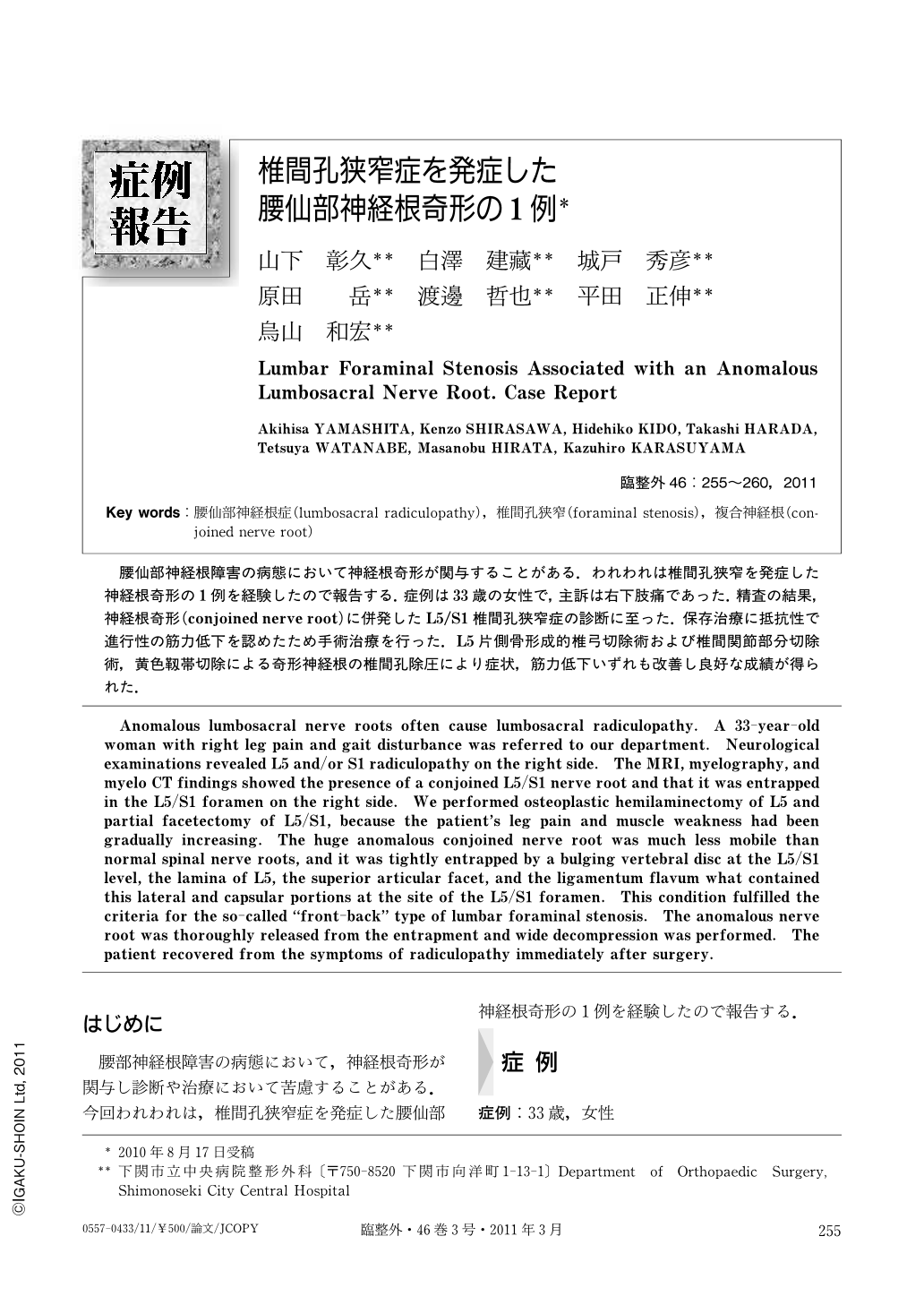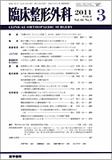Japanese
English
- 有料閲覧
- Abstract 文献概要
- 1ページ目 Look Inside
- 参考文献 Reference
腰仙部神経根障害の病態において神経根奇形が関与することがある.われわれは椎間孔狭窄を発症した神経根奇形の1例を経験したので報告する.症例は33歳の女性で,主訴は右下肢痛であった.精査の結果,神経根奇形(conjoined nerve root)に併発したL5/S1椎間孔狭窄症の診断に至った.保存治療に抵抗性で進行性の筋力低下を認めたため手術治療を行った.L5片側骨形成的椎弓切除術および椎間関節部分切除術,黄色靱帯切除による奇形神経根の椎間孔除圧により症状,筋力低下いずれも改善し良好な成績が得られた.
Anomalous lumbosacral nerve roots often cause lumbosacral radiculopathy. A 33-year-old woman with right leg pain and gait disturbance was referred to our department. Neurological examinations revealed L5 and/or S1 radiculopathy on the right side. The MRI, myelography, and myelo CT findings showed the presence of a conjoined L5/S1 nerve root and that it was entrapped in the L5/S1 foramen on the right side. We performed osteoplastic hemilaminectomy of L5 and partial facetectomy of L5/S1, because the patient's leg pain and muscle weakness had been gradually increasing. The huge anomalous conjoined nerve root was much less mobile than normal spinal nerve roots, and it was tightly entrapped by a bulging vertebral disc at the L5/S1 level, the lamina of L5, the superior articular facet, and the ligamentum flavum what contained this lateral and capsular portions at the site of the L5/S1 foramen. This condition fulfilled the criteria for the so-called “front-back” type of lumbar foraminal stenosis. The anomalous nerve root was thoroughly released from the entrapment and wide decompression was performed. The patient recovered from the symptoms of radiculopathy immediately after surgery.

Copyright © 2011, Igaku-Shoin Ltd. All rights reserved.


